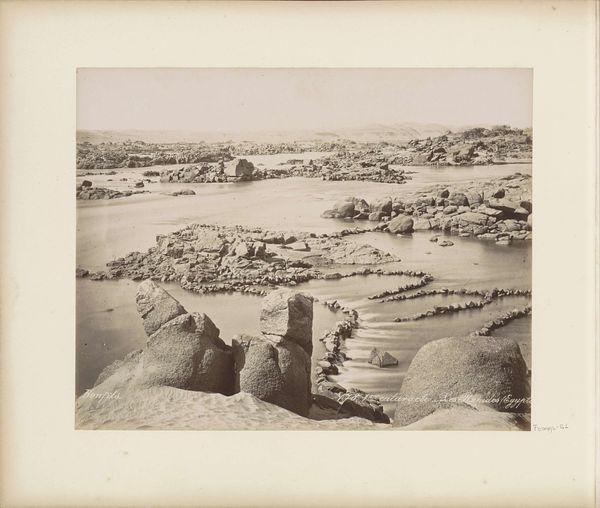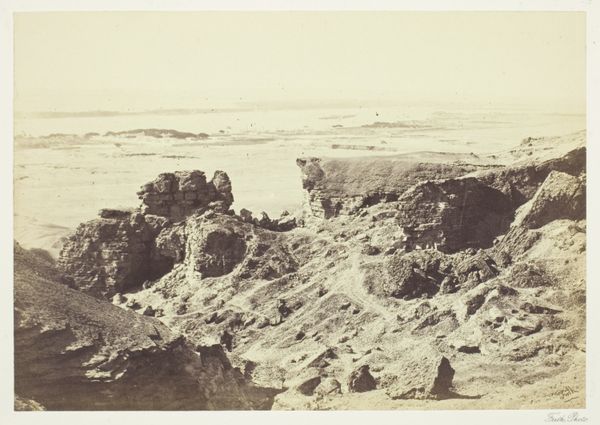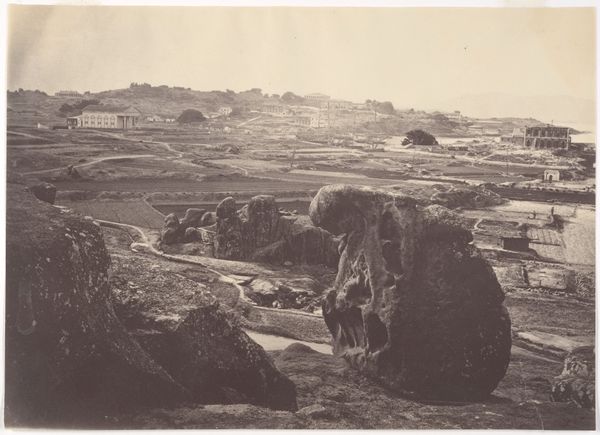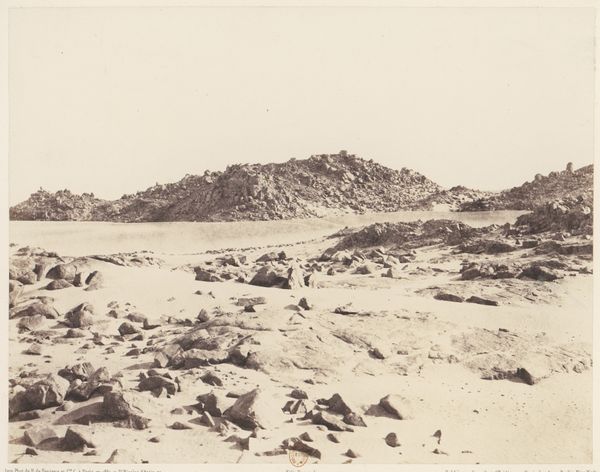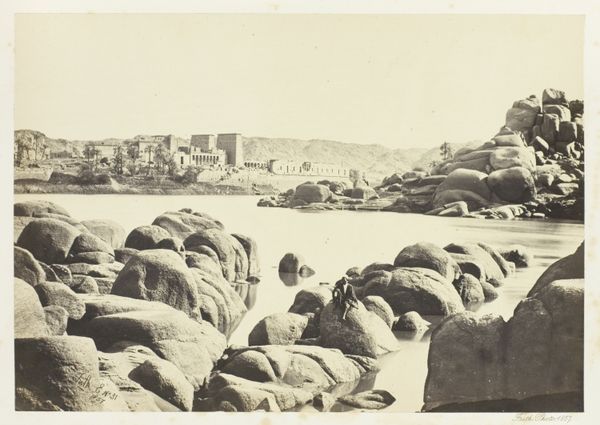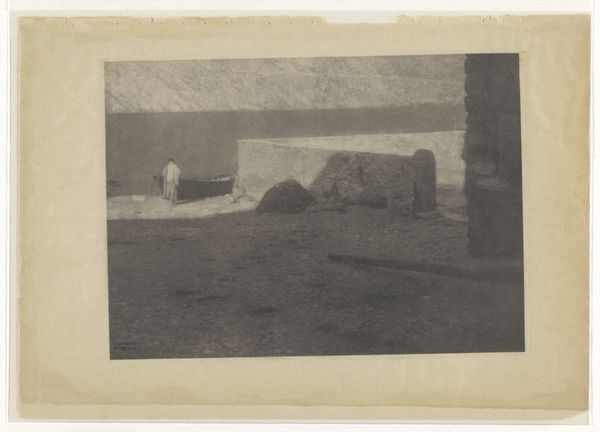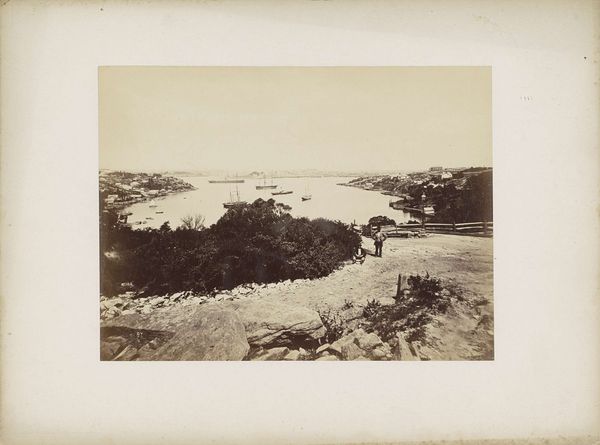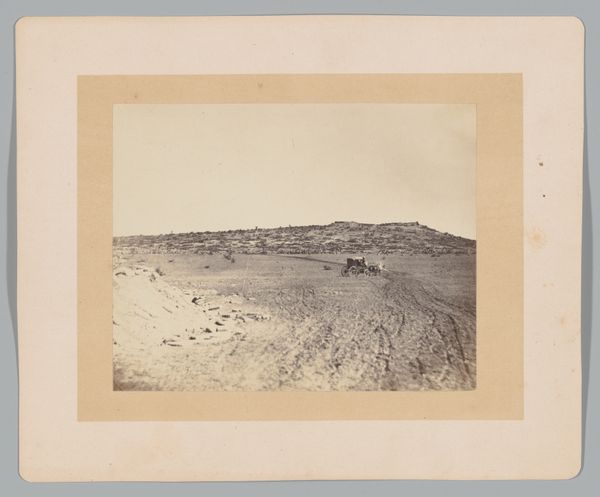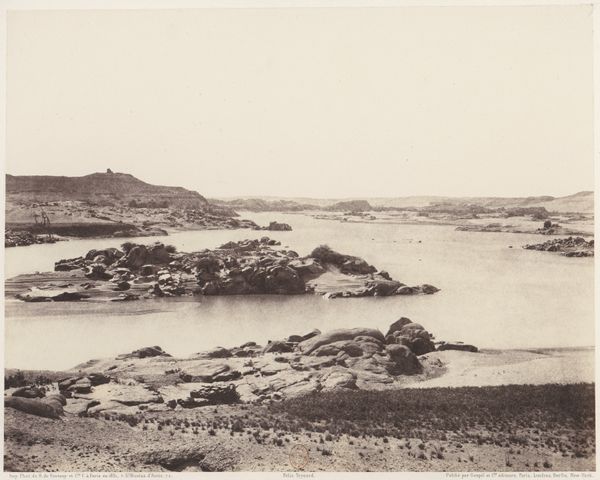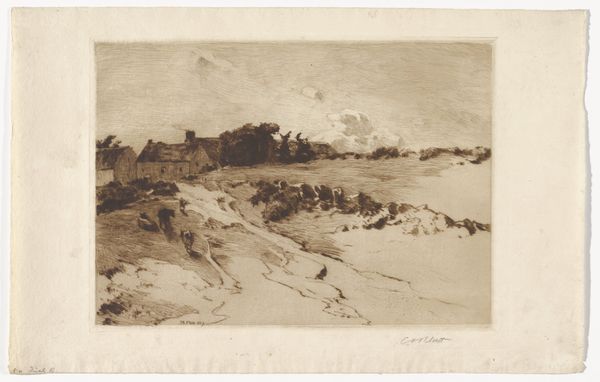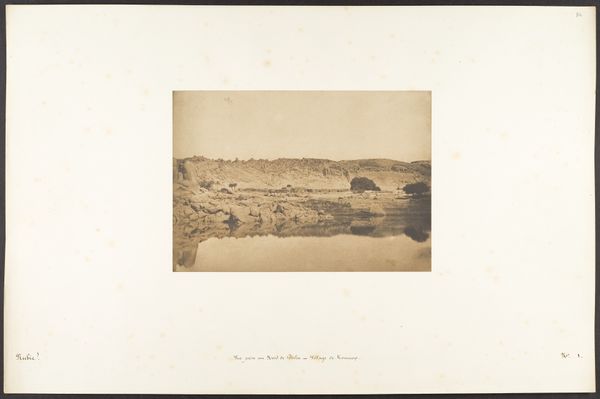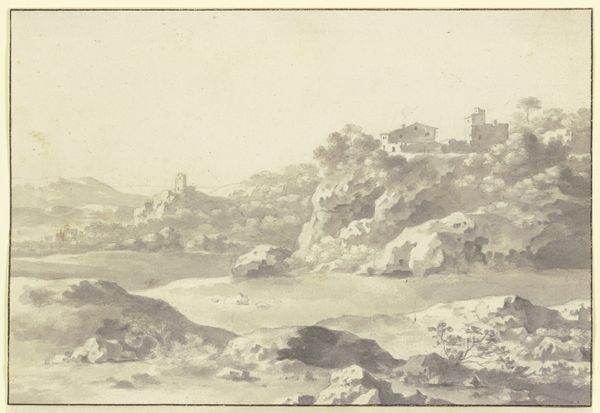
photography, gelatin-silver-print
#
photo of handprinted image
#
african-art
#
landscape
#
photography
#
orientalism
#
gelatin-silver-print
Dimensions: height 224 mm, width 281 mm
Copyright: Rijks Museum: Open Domain
Curator: Here we have "Mannen badend in stroomversnellingen van de Nijl," or "Men bathing in the rapids of the Nile," a gelatin silver print made sometime between 1870 and 1890 by C. & G. Zangaki. It's currently held in the Rijksmuseum collection. Editor: Immediately, I notice the almost monochrome palette and the interesting use of depth. The large rocks in the foreground create this imposing barrier that both draws us into and holds us back from the rapidly flowing water and figures. Curator: The Zangaki brothers, of Greek origin, were prolific commercial photographers working in Egypt. Images like these were made and sold to tourists, reflecting an orientalist perspective prevalent at the time. The photograph became a commodity. Editor: Yes, the scene certainly romanticizes life on the Nile. Notice how the composition, with its careful arrangement of natural forms, directs our gaze towards those partially submerged figures. Light plays across the water's surface, rendering its movement with surprising detail for the time. Curator: And the very act of photographing here! Think about the colonial dynamics at play. Photography itself became a tool for documenting, categorizing, and, in a way, claiming ownership over these distant lands and their inhabitants. Who gets to capture and circulate images like this and for what audience becomes a pivotal point. Editor: I am struck by how this gelatin silver print, using albumen paper processed with light, makes you focus on its aesthetic properties. It shows off the photographer’s technique rather than engaging in narrative depth. The texture in those rocks... Curator: Right. It's easy to look at its documentary quality without thinking about its role in the construction of a Western gaze. It is worth wondering: how did locals see it? The tourist industry generated very specific forms of visual economy that impacted how they may have seen themselves represented in these images. Editor: Precisely! Considering the balance of forms and tonal range brings clarity to understanding the print. Ultimately the play of light over those rushing waters seems to be the dominant aspect, despite those other questions that emerge around it. Curator: The photograph leaves you to ponder at all levels of experience and cultural perspective, as well as its material implications. Editor: A testament to form meeting an interesting historical moment, creating complex tensions for analysis and appreciation!
Comments
No comments
Be the first to comment and join the conversation on the ultimate creative platform.
